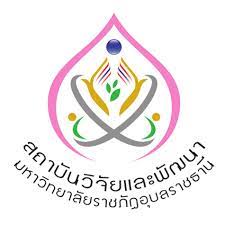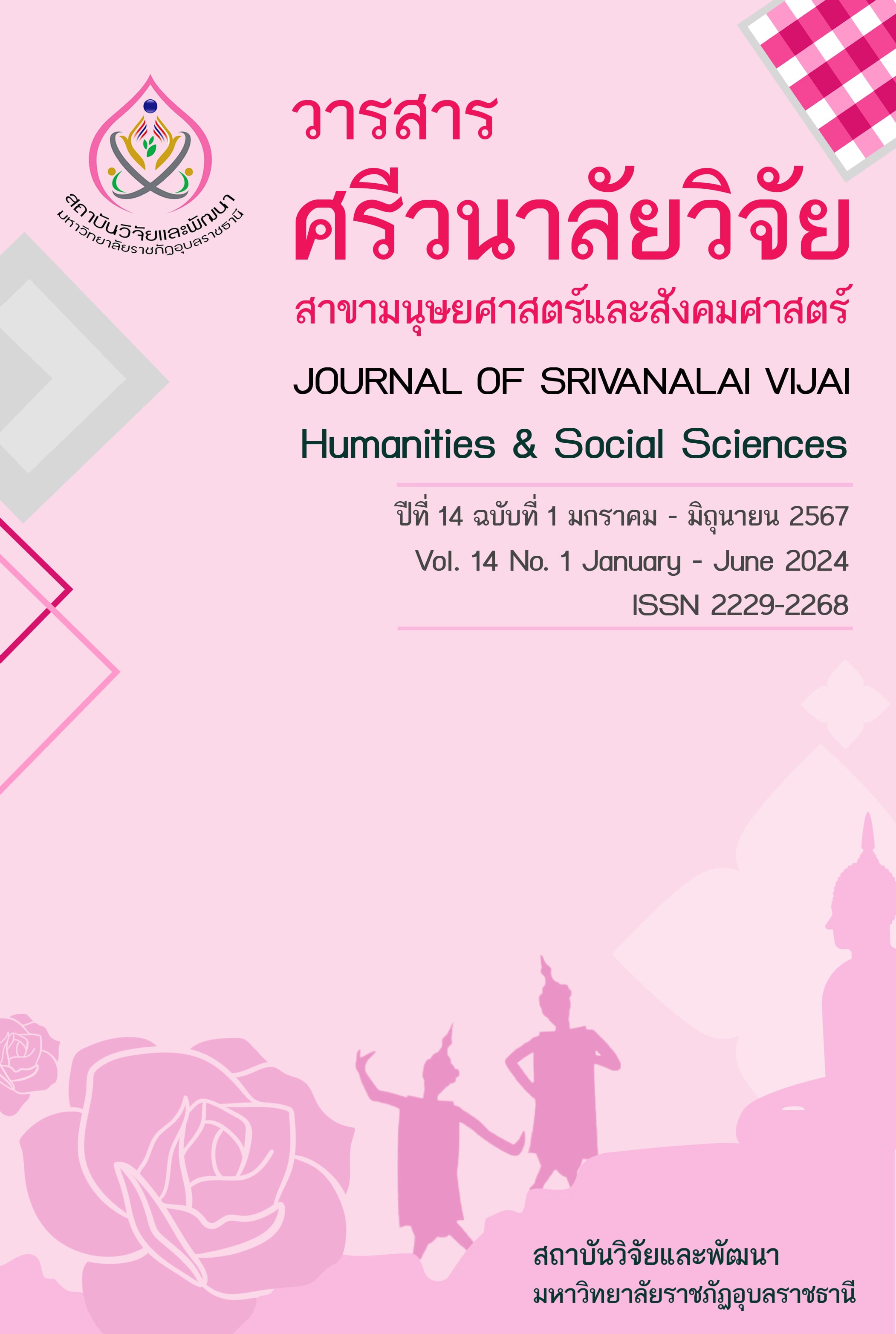แรงจูงใจและความพึงพอใจที่ส่งผลต่อการท่องเที่ยวซ้ำของนักท่องเที่ยว กรณีศึกษา การท่องเที่ยวเทศกาลและงานมหกรรมเมืองพัทยา
Main Article Content
บทคัดย่อ
การวิจัยครั้งนี้มีวัตถุประสงค์เพื่อศึกษาแรงจูงใจที่ส่งผลต่อการท่องเที่ยวซ้ำของนักท่องเที่ยวกรณีศึกษาการ ท่องเที่ยวเทศกาลและงานมหกรรมเมืองพัทยาโดยเก็บรวบรวมข้อมูลจากกลุ่มตัวอย่างนักท่องเที่ยวที่เคยมาท่อง เที่ยวงานเทศกาลและมหกรรมเมืองพัทยา จำนวน 400 คน ผ่านวิธีการสุ่มแบบเฉพาะเจาะจง จากนั้นนำข้อมูลมา วิเคราะห์ผ่านสถิติเชิงพรรณนา โดยใช้ความถี่ ร้อยละ ค่าเฉลี่ยเลขคณิต ส่วนเบี่ยงเบนมาตรฐาน และสถิติเชิงอนุมาน ในการวิเคราะห์ 2 ตัวแปร One-Way Anova (F-test) และการวิเคราะห์ถดถอยเชิงเส้นพหุคูณ จากผลการศึกษา พบว่า นักท่องเที่ยวให้ความสำคัญกับแรงจูงใจ ความพึงพอใจและการท่องเที่ยวซ้ำอยู่ในระดับมาก X= 4.02 โดย แรงจูงใจด้านปัจจัยดึงดูดส่งผลต่อการท่องเที่ยวซ้ำมากที่สุดและจากการเปรียบเทียบปัจจัยส่วนบุคคลต่อการ ท่องเที่ยวซ้ำ พบว่า เพศ อายุ การศึกษา อาชีพ ภูมิลำเนา ที่แตกต่างกันส่งผลต่อการท่องเที่ยวซ้ำไม่ต่างกันแรงจูงใจ และความพึงพอใจส่งผลต่อการท่องเที่ยวซ้ำของนักท่องเที่ยวกรณีศึกษาการท่องเที่ยวเทศกาลและงาน มหกรรม เมืองพัทยา อย่างมีนัยสำคัญที่ 0.05
Article Details
เอกสารอ้างอิง
กระทรวงการท่องเที่ยวและกีฬา. (2566). สถานการณ์การท่องเที่ยวในประเทศ รายจังหวัด ปี 2566. สืบค้นเมื่อ
ธันวาคม 2566, จาก http://www.mots.go.th/news/category/705
ชนิสรา แก้วสรรค์. (2565). การตัดสินใจท่องเที่ยวของนักท่องเที่ยวที่มีต่อลักษณะด้านกายภาพแหล่งท่องเที่ยวเชิง
ธรรมชาติชายหาดบางแสน จังหวัดชลบุรี. วารสารศิลปะศาสตร์และอุตสาหกรรมบริการ. 5(6), 191.
ณัฐพล เนียมแก้ว. (2560). พฤติกรรมและความพึงพอใจของนักท่องเที่ยวชาวไทยที่มีต่อวัดเฉลิมพระเกียรติพระ
จอมเกล้าราชานุสรณ์ อำเภอแจ้ห่ม จังหวัด ลำปาง. วิชาการมหาวิทยาลัยฟาร์ อีสเทอร์น.1: 316-323.
ประอรพิศ กัชวัฒนา. (2566). อัปเดตการท่องเที่ยว เมืองพัทยา ในวันที่ทุกธุรกิจฟื้นตัวเต็มร้อย แล้วเมืองท่องเที่ยว
จะโตต่ออย่างไรให้ยั่งยืน. สืบค้นเมื่อ 20 ธันวาคม 2566, จาก
https://www.salika.co/2023/09/15/pattaya-tourism-updated-2023/
ผู้จัดการออนไลน์. (2566). นักท่องเที่ยวซ้ำอีกปัยสำคัญดันท่องเที่ยวโตขับเคลื่อนศก. สืบค้นเมื่อ 21 ธันวาคม
, จาก https://mgronline.com/business/detail/9660000112434
พิพัฒน์ เหลืองนฤมิตชัย. (2566). การท่องเที่ยวกับเศรษฐกิจไทย พ.ศ. 2561. สืบค้นเมื่อ 22 ธันวาคม 2566
จาก https://www.the101.world/tourism-and-thai-economy/
ภัคสิริ เผือกผ่อง และแสงแข บุญศิริ. (2562). ปัจจัยทางการท่องเที่ยวที่มีอิทธิพลต่อการกลับมาท่องเที่ยวซ้ำของ
ตลาดน้ำ วัดลำพญาอำเภอบางเลน จังหวัดนครปฐม. วารสารสังคมศาสตร์บูรณาการ
มหาวิทยาลัยมหิดล. 6(2), 132-154.
รุ่งวรี คล้ายสุวรรณ. (2554). ปัจจัยที่ส่งผลต่อการตัดสินใจเลือกเดินทางท่องเที่ยวของ นักท่องเที่ยวชาวไทยใน
จังหวัดชลบุรี. วิทยานิพนธ์ปริญญามหาบัณฑิต มหาวิทยาลัยนเรศวร.
สมบัติ ท้ายเรือคํา. (2551). ระเบียบวิธีวิจัยสําหรับมนุษยศาสตร์และสังคมศาสตร์. (พิมพ์ครั้งที่ 2). กาฬสินธุ์:
ประสานการพิมพ์.
หลิวยวี่และ ฐิติยา ปราโมทย์. (2566). อิทธิพลของภาพลักษณ์การท่องเที่ยวและความพึงพอใจที่ส่งผลต่อการ
กลับมาเที่ยวซ้ำของนักท่องเที่ยวชาวจีนในนครเฉิงตูสาธารณรัฐประชาชนจีน.วารสารการจัดการและ
การพัฒนา มหาวิทยาลัยราชภัฏอุบลราชธานี. 10(1), 219-235.
Anggraeni, R. (2019). Enhancing the revisit intention of nature-based tourism in Indonesia: The
role of memorable tourism experience and satisfaction. Management and Business
Research Quarterly, 11, 9-19. DO :10.32038/mbrq.2019.11.02
Berkman, H., Lindquist, J., & Sirgy, M. J. (1997). Consumer behavior: Concepts and marketing
strategy. Lincolnwood, IL: NTC Business Books.
Brahmantyo, H., & Mariati, S. (2023). Analysis of The Effect of Push Factors and Pull Factors on
Tourists Revisit Intention To Pahawang Island, Pesawaran District, Lampung
Province. International Journal of Travel, Hospitality and Events. 2(1), 1-9.
Crompton, J. L. (1979). Motivations for pleasure vacation. Annals of Tourism Research. 6(4),
-424.
Dann, G. (1981). Tourist Motivation: An Appraisal. Annals of Tourism Research. 1(8)ม 187-219.
David Weaver and Matin Oppermann. (2000). Tourism management. Milton, Qld.: Jacaranda
Wiley.
Fakaye, P. C. & Crompton, J. L. (1991). Image differences between prospective, first time and
repeat visitors to the lower Rio Grande valley. Journal of Travel Research. 30(2), 10-16.
Hudman, L. E. (1980). Tourism : A shining world. Ohio : Grid.
Kassin, S. (1998). Psychology (2nd ed.). Upper Saddle River, NJ: Prentice Hall. Katz, D. (1960). The
functional approach to the study of attitudes. Public Opinion Quarterly, 24, 163-
Maghsoodi Tilaki, M. J., Hedayati Marzbali, M., Abdullah, A., & Bahauddin, A. (2016). Examining the
influence of international tourists' destination image and satisfaction on their behavioral
intention in Penang, Malaysia. Journal of Quality Assurance in Hospitality and Tourism,
(4), 425-452.
Pattaya city. Pattaya Events. (2023). Retrieved December, 23, 2023, from,
https://vh-projects.com/pattaya-city-dev/TH/about.html. 2566.
Prayag, G., & Ryan, C. (2010). The relationship between the push and pull factors of a tourist
destination. the role of nationality: an analytical qualitative research approach. Current
Issues in Tourism, 14(2), 121-143
Klenosky, D. B. (2002). The pull of tourism destinations: A means-end investigation. Journal of
Travel Research. 40(4): 385-395.
Kotler, P., & Armstrong, G. (2010). Principles of marketing. Pearson education.
Krejcie, R.V., & Morgan, D.W. (1970). Educational and Psychological Measurement. 30, 607-610.
Oliver, R., & Rust, R. (1994). Service Quality: Insights and Managerial Implication from
the Frontier. New York: Sage Publications.
Oliver, R. L. (1999). Whence consumer loyalty? Journal of Marketing, Special Issue 63,
-44.
Wei, Z. (2561). การศึกษาแรงจูงใจและความพึงพอใจของนักท่องเที่ยวชาวจีนที่เดินทางมาชมการแสดงสาว
ประเภทสองที่เมืองพัทยา จังหวัดชลบุรี. วิทยานิพนธ์ปริญญามหาบัณฑิต มหาวิทยาลัยกรุงเทพ.
Whang, H., Yong, S.,& Ko, E.(2016). Pop culture, destination images, and visit intentions: Theory
and research on travel motivations of Chinese and Russian tourists. Journal of business
research, 69, 631-641.

